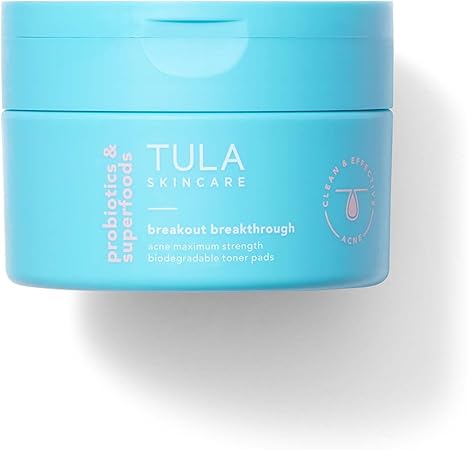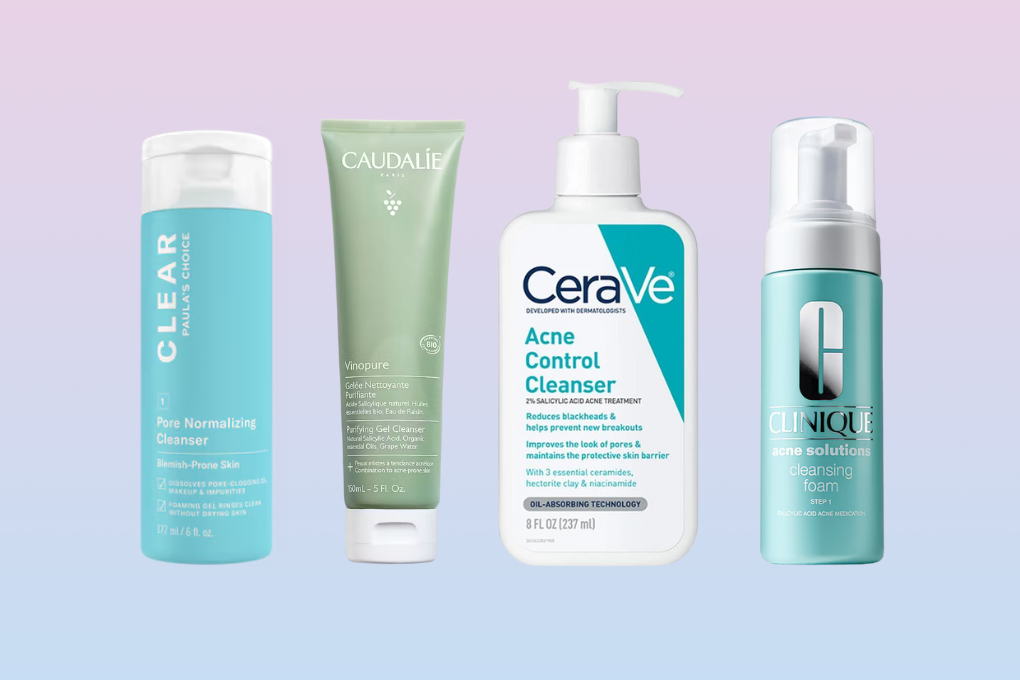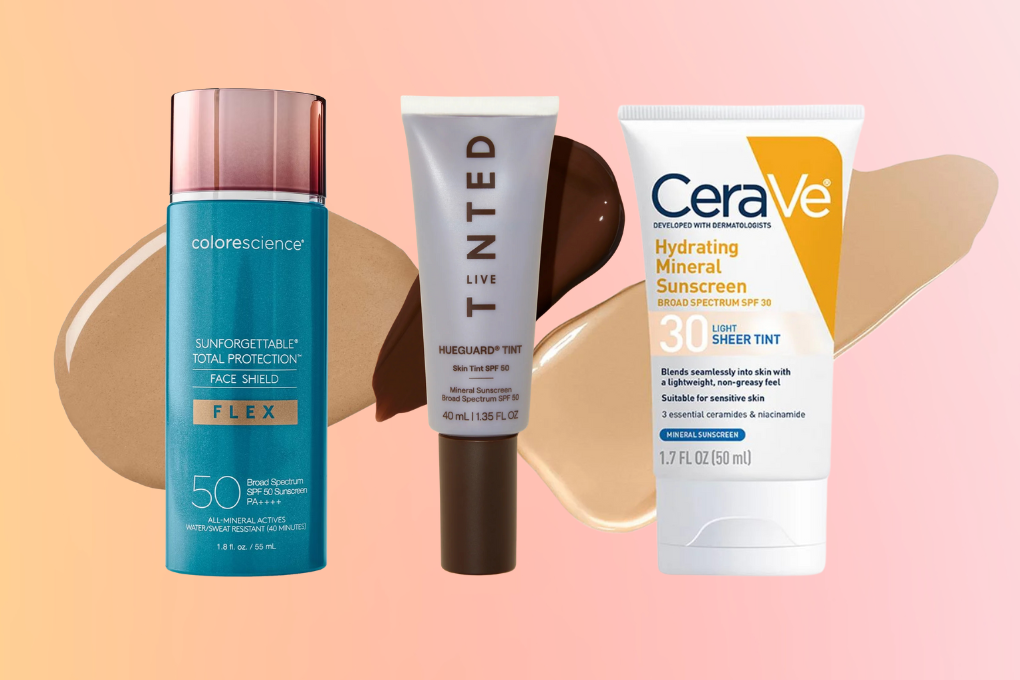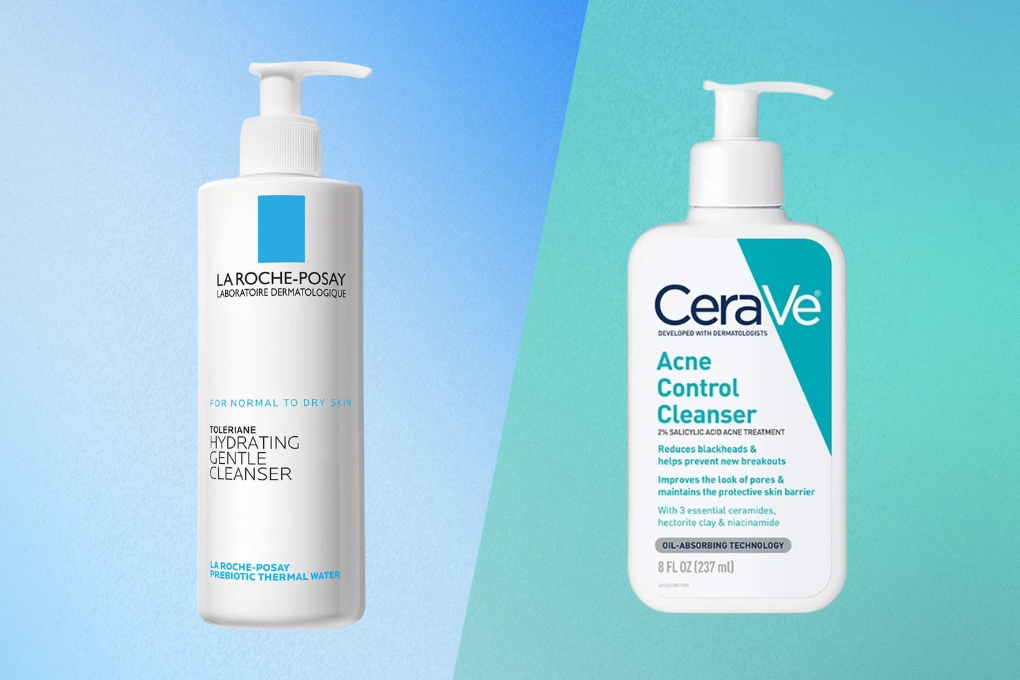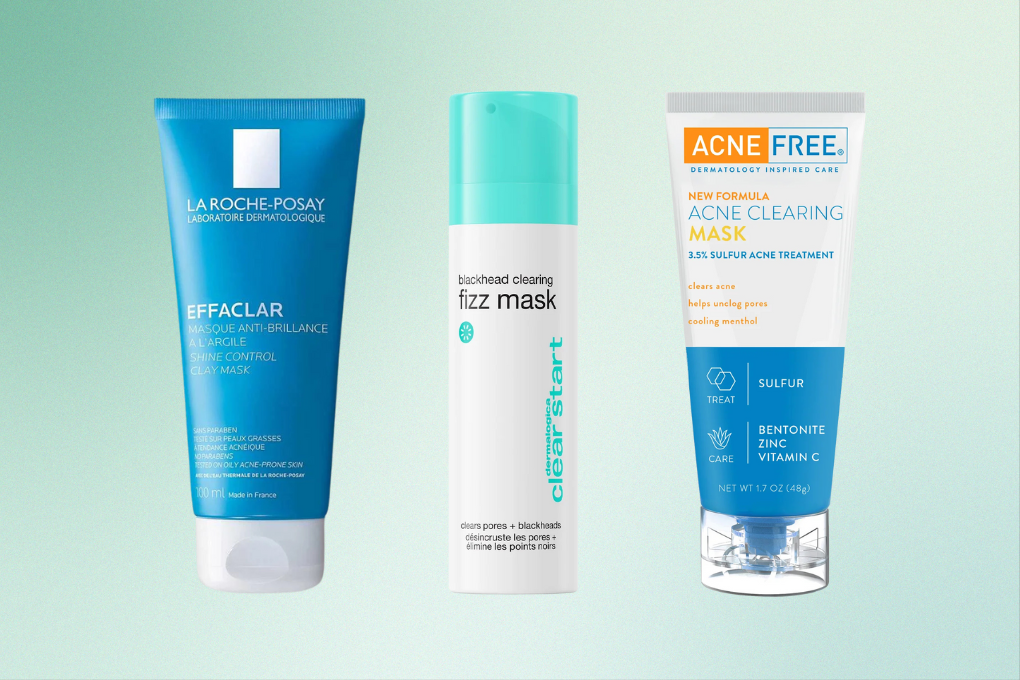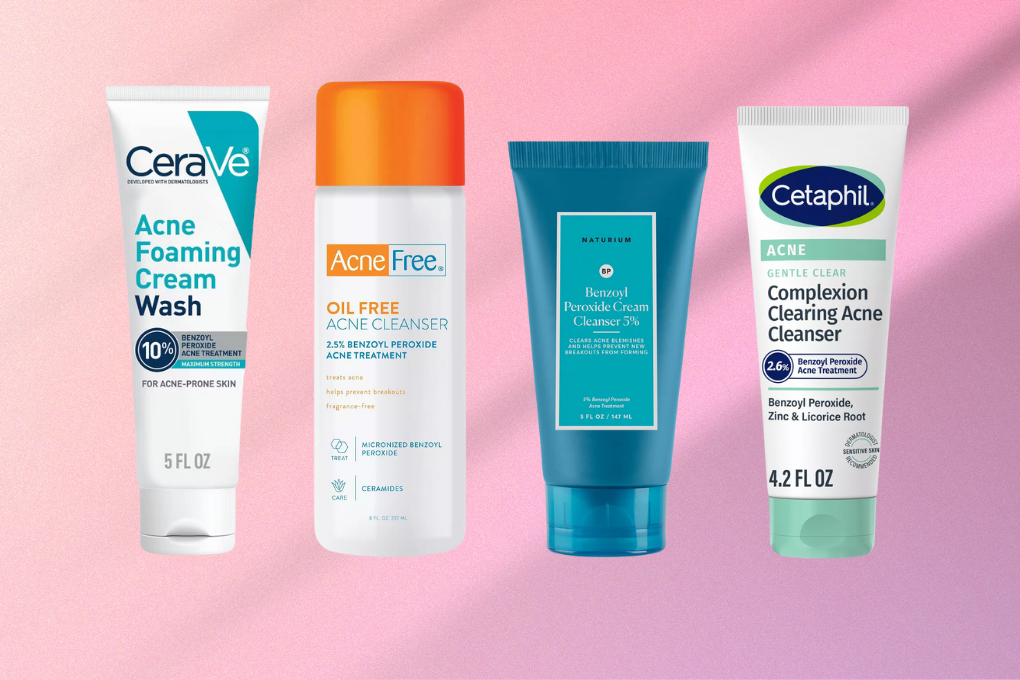- What Does Salicylic Acid Do?
- What Is Salicylic Acid Used For?
- Is Salicylic Acid Good for Acne?
- Salicylic Acid Over-The-Counter or Prescription
- Salicylic Acid for Different Skin Types
- Salicylic Acid Side Effects
- Salicylic Acid And Blackheads
- How to Use Salicylic Acid?
- Using Salicylic Acid When Pregnant
- Can Salicylic Acid Cause Purging?
People have been using a form of salicylic acid since ancient civilizations used willow tree bark to soothe various ailments, from fevers to aches. When eaten, the compound salicin found in willow tree bark is converted to salicylic acid.
Fast-forward to the nineteenth century when chemists were able to isolate salicylic acid from willow bark, paving the way for its use in modern medicine, including the creation of aspirin, which became a pain-relief sensation.
Today, while aspirin remains a commonly used pain-relief drug, salicylic acid has carved a niche in dermatology, becoming a prime ingredient in many over-the-counter and prescription acne treatments.
What Does Salicylic Acid Do?
Salicylic acid is a beta-hydroxy acid (BHA), and it works on the skin primarily as a type of exfoliant called a keratolytic. Keratolytic is derived from the word “keratin,” which is a type of protein that is a key component of the outer layer of our skin, hair, and nails. When something is “keratolytic,” it means it has the ability to break down and soften the keratin that binds skin cells together. By breaking down this “glue,” salicylic acid helps exfoliate the skin, shedding dead skin cells and preventing them from clogging pores.
Like other BHAs, salicylic acid’s molecular structure allows it to be oil-soluble. This means it can penetrate deeper into the sebaceous gland and exfoliate inside the pore itself. This is crucial when dealing with acne-prone skin, as excess oil often plays a big part in breakouts.
Salicylic acid possesses mild antifungal and antibacterial properties, which can further assist in reducing some acne-causing bacteria and treat conditions like dandruff. Salicylic acid can reduce inflammation. This is particularly beneficial for inflamed acne lesions.
What Is Salicylic Acid Used For?
Being keratolytic means that salicylic acid is an excellent exfoliating agent, capable of softening and removing layers of dead skin cells. This property is particularly beneficial for various skin concerns in addition to acne, such as:
- Salicylic Acid Shampoo for Dandruff: Just like on the rest of our skin, salicylic acid acts as a gentle exfoliant for the scalp. By shedding dead skin cells it helps prevent them from clumping together and turning into visible flakes.
- Salicylic Acid for Warts: Many over-the-counter wart treatments come in the form of salicylic acid pads, gels, or patches. When applied to warts, salicylic acid soaks in deep. Over time, it breaks down the structure of the wart, eventually causing it to fall off.
- Salicylic Acid and Keratosis Pilaris: Salicylic acid can also smooth out those little chicken-skin bumps we can get on the back of our arms and on our legs, known as keratosis pilaris (KP). With KP, dead skin cells can clog hair follicles, leading to those characteristic bumps. By gently sloughing off dead skin cells, salicylic acid lotion can smooth out these rough patches.
- Salicylic Acid and Psoriasis: Psoriasis is an autoimmune condition that causes rapid skin cell buildup, leading to thick, red, scaly patches that can itch and sting. By breaking down the flaky barriers, salicylic acid cream not only reduces the appearance of psoriatic patches but also allows other treatments to penetrate deeper and work their magic.
Is Salicylic Acid Good for Acne?
Ever wondered why salicylic acid is often highlighted as an active ingredient on acne product labels? Let’s break down its relationship with acne.
A pimple begins when excess oil (sebum) is produced by our skin’s oil glands which can mix with dead skin cells and make a sebum plug that blocks our pores, and can create open and closed comedones (blackheads and whiteheads). When pores are clogged, it creates the perfect environment for bacteria, particularly Cutibacterium acnes, to thrive as they feed on the trapped sebum.
The increase of bacteria in the pore provokes an inflammatory response, causing the redness and tenderness we all know too well. Our immune system tries to combat the bacterial invasion, leading to the formation of pus. And there we have it; the dreaded pimple.
Salicylic acid can help break this cycle by penetrating the oily environment of pores and exfoliating the debris inside them that causes comedones, the precursors of pimples. By helping to prevent clogged pores before they turn into pimples, salicylic acid can prevent future acne breakouts and, when used regularly, can improve the overall texture of the skin.
While exfoliation is the main way salicylic acid treats and prevents acne, it also has some anti-inflammatory and mild antibacterial properties that can help minimize the size and redness of pimples and reduce the bacteria that cause acne breakouts.
Salicylic Acid Over-The-Counter or Prescription
For many seeking treatment for acne, over-the-counter salicylic acid products are often the first line of defense. Salicylic acid is widely available over the counter ranging from 0.5-2% concentration for acne. From cleansers and toners to spot treatments and masks, over-the-counter salicylic acid comes in many types to address every use case, skin type, and budget.
Prescription salicylic acid is usually used to treat warts, psoriasis, or other skin conditions and is not commonly prescribed for acne. However, your medical provider may have some suggestions for over-the-counter products with salicylic acid that they recommend for your acne.
If you’ve tried over-the-counter treatments with salicylic acid without the desired results or have more aggressive skin concerns, it might be time to consult your dermatologist about stronger acne treatments such as retinoids, Accutane, and spironolactone.
Over-The-Counter Products With Salicylic Acid
Over-the-counter salicylic acid products are widely available at drugstores or skincare retailers, but finding the right option for you may require some experimentation. Err on the gentler side of products until you know what your skin can tolerate, and try to buy smaller travel-sized products if available until you find the one that’s right for you. If you look at the back of a product, salicylic acid, along with its percentage, will be listed as an active ingredient, making it easy to compare. Here are some different ways you can incorporate salicylic acid into your routine:
Salicylic Acid Moisturizer: If you want to address acne concerns while maintaining hydration, all in one product, a moisturizer with salicylic acid might be the two-in-one you’re looking for. By combining moisture retention with gentle exfoliation, it’s perfect for daily use.
Peach Slices Acne Oil-Free Moisturizer Satin Matte Finish 0.5% Salicylic Acid
Salicylic Acid Pads: Pre-soaked pads are the convenient way to use salicylic acid for anyone with a busy lifestyle. Perfect for post-workout or a quick refresh, they help combat oil build-up effectively. tackle oil and grime, giving your pores a fresh start.
Salicylic Acid Liquid: This versatile liquid formulation can be used as a targeted spot treatment or combined with other skincare products. It’s a flexible option for those wanting to tailor their salicylic acid application.
Paula's Choice Sensitive Skin BHA Exfoliant 1% Salicylic Acid
Paula's Choice has an excellent lineup of well-formulated exfoliants, and this 1% BHA is the perfect choice for sensitive skin that can't tolerate strong active ingredients. The formula is a light gel-cream with soothing allantoin and mushroom extract to reduce redness. A mild strength of 1% salicylic acid gently exfoliates the skin's surface and inside pores to clarify skin and even tone, while also being gentle enough for even rosacea-prone skin.
- Allantoin and mushroom extract to reduce redness
- 1% salicylic acid to gently clear pores and smooth
- Gentle enough for rosacea-prone skin
- May be too mild for moderate acne
Paulas Choice Skin Perfecting BHA Liquid Exfoliant with 2% Salicylic Acid
Paula's Choice 2% BHA Liquid Exfoliant is a fan favorite for good reason. This lightweight toner refreshes skin and uses 2% strength of salicylic acid to exfoliate and clear pores. It has an optimal pH, which is important for exfoliants to get maximum effectiveness without irritation, and it contains soothing green tea to support the skin’s barrier. But watch out because this gentle formula is still strong, so remember to ease into use.
- Optimal pH for acid
- Green tea to soothe and support skin barrier
- Expensive
- Too strong for some skin types
Salicylic Acid Mask: A clay mask with salicylic acid is not only relaxing but also works hard to clear out those stubborn blackheads and brighten your complexion. Just be sure not to overdo it. Once a week might just be the sweet spot.
Murad Rapid Relief Acne Clay Face Mask with Salicylic Acid and 5% Sulfur
The Rapid Acne Relief mask by Murad is made with 5% bacteria-fighting sulfur as well as exfoliating salicylic acid to tackle breakouts. Kaolin clay, which works to absorb excess oil and reduce shine, is balanced with hydrating Austrian peat extract to keep the mask from being too drying. The smell of sulfur is partially covered by eucalyptus oil, so you get the acne-fighting power with a spa night friendly scent.
- 5% sulfur fights breakouts
- Salicylic acid clears pores
- Kaolin clay absorbs excess oil
- Expensive for the size
Salicylic Acid Body Wash: Acne doesn’t just pick faces. Salicylic acid body wash is a game-changer for anyone struggling with body acne, especially in those hard-to-reach areas. Regular use can help reduce breakouts on the body and show that bacne who’s boss.
Cetaphil Acne Relief Body Wash with 2% Salicylic Acid to Eliminate Breakouts
Salicylic Acid Cleanser: A daily salicylic acid cleanser is a great way to add salicylic acid to your already established skin care routine. Due to the cleanser’s short contact with your skin, it is also perfect for easing into using salicylic acid and seeing how your skin reacts.
La Roche-Posay Effaclar Medicated Gel Cleanser with 2% Salicylic Acid and LHA
La Roche-Posay's gel cleanser is our top choice for oily skin types because it thoroughly cleanses and dissolves oil with 2% salicylic acid. It was even tested to reduce excess surface oil by up to 47%, so it can help keep skin less oily during the day. It also contains lipo-hydroxy acid (LHA), which has exfoliating and skin renewing properties, and glycerin to help the skin retain moisture.
- Full strength 2% salicylic acid
- Added LHA to help exfoliate
- May be strong for sensitive skin
Salicylic Acid Peel: When you’re looking for something a tad stronger, a salicylic acid peel provides deeper exfoliation. These peels usually combine up to 2% salicylic acid with other acids like glycolic acid or lactic acid. They can be very potent so it’s essential to approach them with caution and patch test first.
Dr. Dennis Gross Alpha Beta Universal Daily Peel with 5 AHA/BHAs
Salicylic Acid Spray: A practical solution for those hard-to-reach areas or when you’re on the move. This spray formulation makes the application simple and efficient, particularly for body acne.
Salicylic Acid Toner: Post-cleansing, a toner can help rebalance the skin’s pH. With the added advantage of salicylic acid, it further aids in keeping potential breakouts in check.
Farmacy Deep Sweep 2% BHA Toner for Face with Salicylic Acid
Salicylic Acid Pimple Patch: If you are dealing with a deep lurking cyst that topical acne treatment can’t reach, micropoint pimple patches can deliver the salicylic acid deeper into the skin, where it can be most effective.
Hero Cosmetics Mighty Patch Micropoint for Early Stage Zits and Hidden Pimples with 0.5% Salicylic Acid and Niacinamide
The classic Mighty Patch from Hero Cosmetics has a Micropoint version to help target deep pimples. The hydrocolloid patch provides protection and a good environment for healing, while 395 dissolving micropoints deliver salicylic acid under the skin where it can be most effective. Niacinamide, hyaluronic acid, and centella extract help hydrate and soothe, so your skin can heal. Simply press the patch into your pimple for 20 seconds, then leave for 6-8 hours.
- Effective on deep pimples when used early
- Salicylic acid to unclog pores
- Hyaluronic acid, niacinamide, and centella extract to hydrate and soothe
- Expensive if you need them often
Salicylic Acid Spot Treatment: Spot treatments with salicylic acid offering a targeted approach for individual pimples without overly drying out the surrounding skin and can quickly reduce inflammation and redness.
Murad Rapid Relief Acne Spot Treatment 2% Salicylic Acid Invisible Gel Solution
Salicylic Acid for Different Skin Types
Although salicylic acid can address various skin concerns from acne to blackheads, its utilization is not one-size-fits-all. Different skin types have different needs and respond variably to skincare products, salicylic acid included. Trust your skin’s signals, and if you’re ever in doubt, reach out to a dermatologist for some professional guidance.
Is Salicylic Acid Good for Oily Skin?
First, props to oily skin. That natural sheen? It’s like nature’s highlighter. On the other hand, oily skin often creates the perfect environment for acne to take hold. Fortunately, salicylic acid and oily skin might be a match made in skin care heaven.
Salicylic acid dives deep into oily pores, clearing out oil buildup and reducing the appearance of enlarged pores. While salicylic acid manages oil production, it doesn’t strip your skin entirely, helping maintain a balanced complexion. However, even oily skin needs hydration, so pair your salicylic acid regimen with a light, non-comedogenic moisturizer.
Is Salicylic Acid Good for Sensitive Skin?
Sensitive skin can be a bit like that friend who takes everything to heart (let’s be real, it’s usually us!). It might react to products or ingredients that other skin types shrug off.
The good news is that salicylic acid can be beneficial for sensitive skin, especially in milder concentrations. A lower concentration product (think around 0.5-1%) might be your sweet spot. Start gently and begin using the product once or twice a week, and gauge your skin’s reaction. Always pair salicylic acid with a hydrating moisturizer to counteract any potential drying effects.
Is Salicylic Acid Good for Dry Skin?
Salicylic acid is known for its ability to cut through sebum and unclog pores. But for those with drier complexions, it can sometimes feel a bit… well, drying. However, don’t write it off just yet. If you experience blackheads, whiteheads, or pimples, you can still benefit from salicylic acid.
For drier skin types, you should go easy. Start with a product that has a lower salicylic acid concentration or one with moisturizing ingredients, and use it sparingly only on the areas where you need it. Remember, skincare is a balancing act. Using a rich moisturizer alongside salicylic acid can help counteract potential dryness.
Salicylic Acid Side Effects
We all know salicylic acid is a popular ingredient in many of our skincare products. But as with all things, it’s important to know both the benefits and the potential pitfalls. Here’s a breakdown of some side effects to watch out for:
- Dryness and Peeling: This is probably the most reported side effect. If you’re experiencing dry or flaky patches, you might want to reduce the frequency of your salicylic acid application.
- Redness and Irritation: A bit of redness is to be expected, especially when you first start. If it persists, you may want to switch to a product with a lower concentration of salicylic acid.
- Itchy Sensation: Occasionally, users find that salicylic acid causes itchiness. This could be an indication that your skin might be sensitive to the ingredient.
- Allergic Reactions: While rare, some people may have an allergic reaction to salicylic acid. If you’re seeing significant redness, itchiness, or swelling, stop using the product and consult with a dermatologist.
Salicylic Acid And Blackheads
Blackheads (open comedones) are a result of hair follicles being blocked by a mix of sebum and dead skin cells. The open surface allows oxidation, which turns the blockage dark, hence the name ‘blackhead.’
Salicylic acid has an exceptional knack for diving deep into pores and breaking down debris, making it particularly effective against blackheads. You can try salicylic acid in face cleansers and leave-on solutions for daily use, or try a face mask with salicylic acid once or twice a week on your blackhead-prone areas. No product will be an overnight solution, but with time and consistent use, salicylic acid can play a significant role in reducing blackheads and keeping your pores clear.
How to Use Salicylic Acid?
It’s important to use salicylic acid with care and consideration. Here are some tips to help you incorporate this potent ingredient into your skincare routine effectively:
- Start Slow: If you’re new to salicylic acid, consider starting with a lower concentration to gauge how your skin responds and gradually increase the concentration as your skin tolerates it. You can also try applying it on alternating days before using it daily.
- Stay Hydrated: Salicylic acid can sometimes lead to dryness. Apply a good moisturizer afterward to keep your skin happy and hydrated.
- Let It Soak In: Leave salicylic acid on for at least 10 minutes before applying other skincare products.
- Sun Protection: Continue to wear sunscreen daily, and your future self will thank you.
- Avoid Over-Exfoliation: Protect your skin barrier and be mindful when combining salicylic acid with other active ingredients like retinoids to avoid the risk of over-exfoliating. Sometimes, less is more.
- Patch Test: If you’re unsure how your skin will react, try a patch test on a small area before applying it all over.
- Consistency Matters: For the best results, stick to a consistent routine and be patient. Salicylic acid needs time to clear up existing breakouts and to prevent new ones from forming so it can take several weeks or even months to see results.
Using Salicylic Acid When Pregnant
The American College of Obstetricians and Gynecologists (ACOG) has said that it is safe to use topical salicylic acid during pregnancy. If you’re pregnant or thinking about becoming pregnant, always consult with your healthcare provider or dermatologist before using any skincare products or medications.
Can Salicylic Acid Cause Purging?
If it feels like salicylic acid is making your acne worse, you may be experiencing purging. Purging refers to a reaction your skin can have when you start using certain active skincare ingredients. When you introduce salicylic acid to your skincare routine, it accelerates the skin’s natural exfoliation process. So, any pimples that were just lurking under your skin’s surface might come to a head faster than usual, making it look like your acne has gotten worse.
Purging is usually temporary and should only last a few weeks. If you’re still breaking out after 6-8 weeks, it might be time to reconsider if the product is right for your unique skin. Purging usually happens in areas where you typically get breakouts. If you’re suddenly breaking out in places you usually don’t, it might not be purging—it could be an actual breakout or an allergic reaction, therefore you should speak to your doctor.
Who knew that a simple compound in willow bark would lead to breakthroughs in acne-fighting skincare?
Salicylic acid is a powerful tool for clogged pores and acne, so remember to approach it with caution, especially if you’re new to it, always listen to your skin’s needs, and speak to your doctor for guidance. As you explore the world of salicylic acid products, consider starting with a lower strength and frequency and gradually increase it as your skin acclimates.







